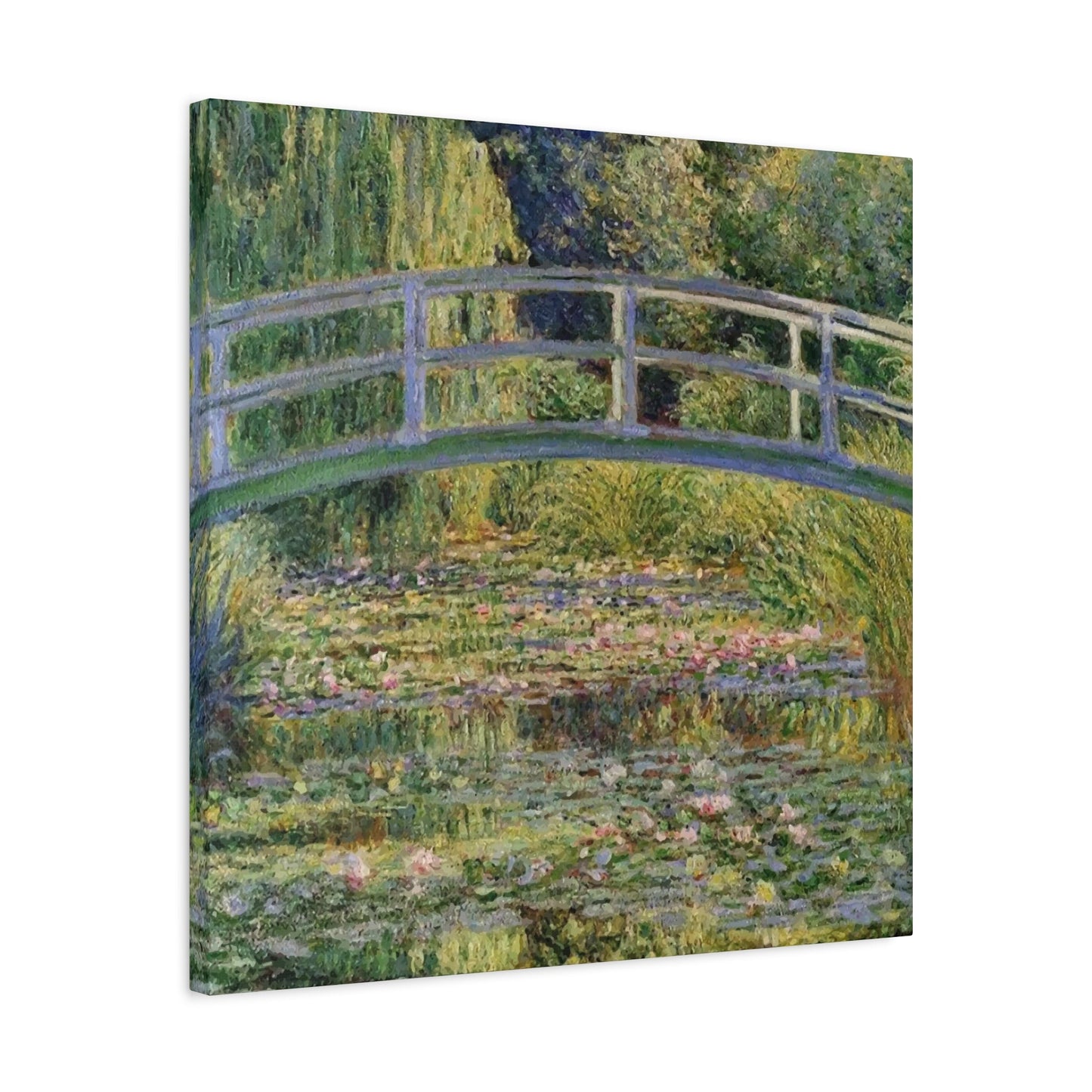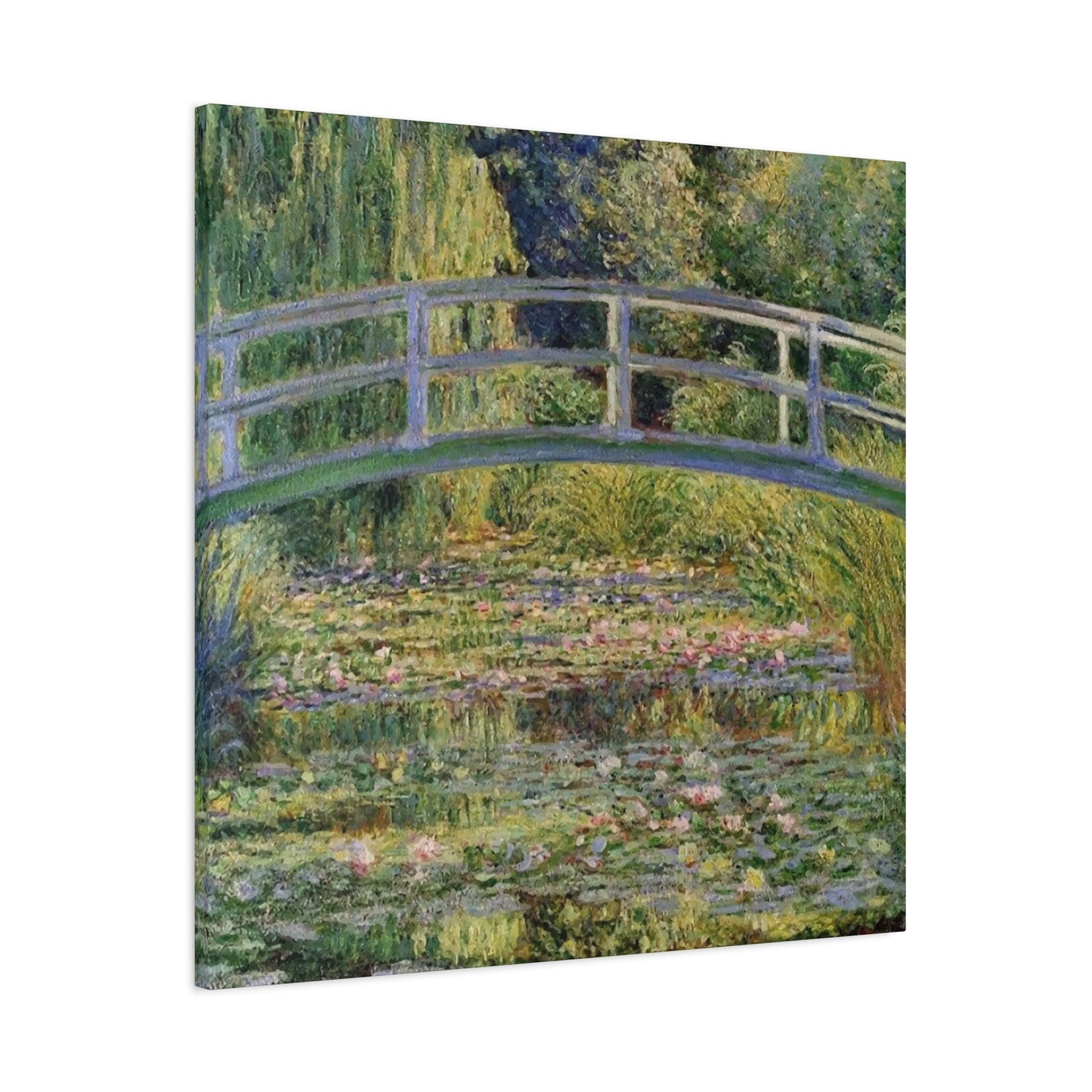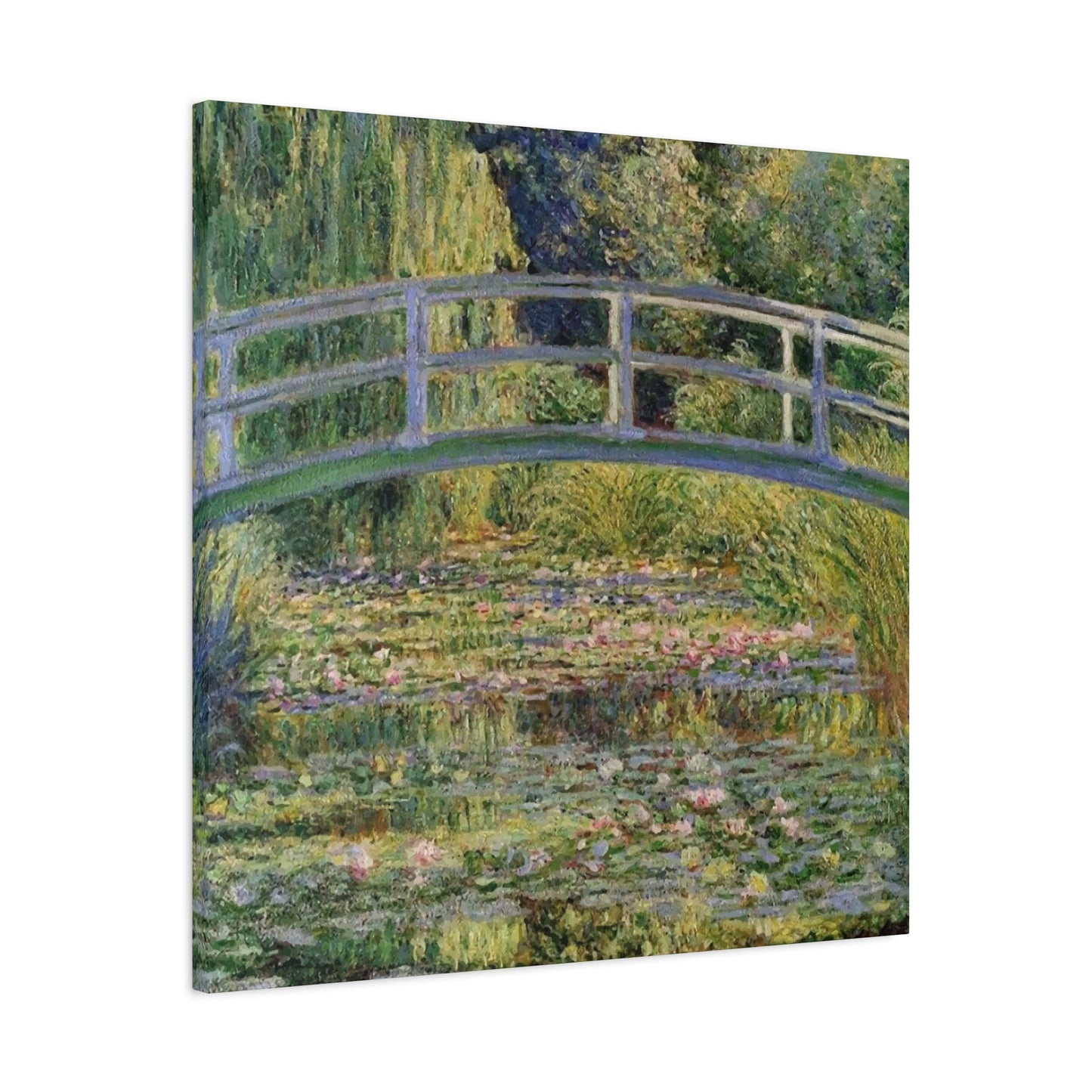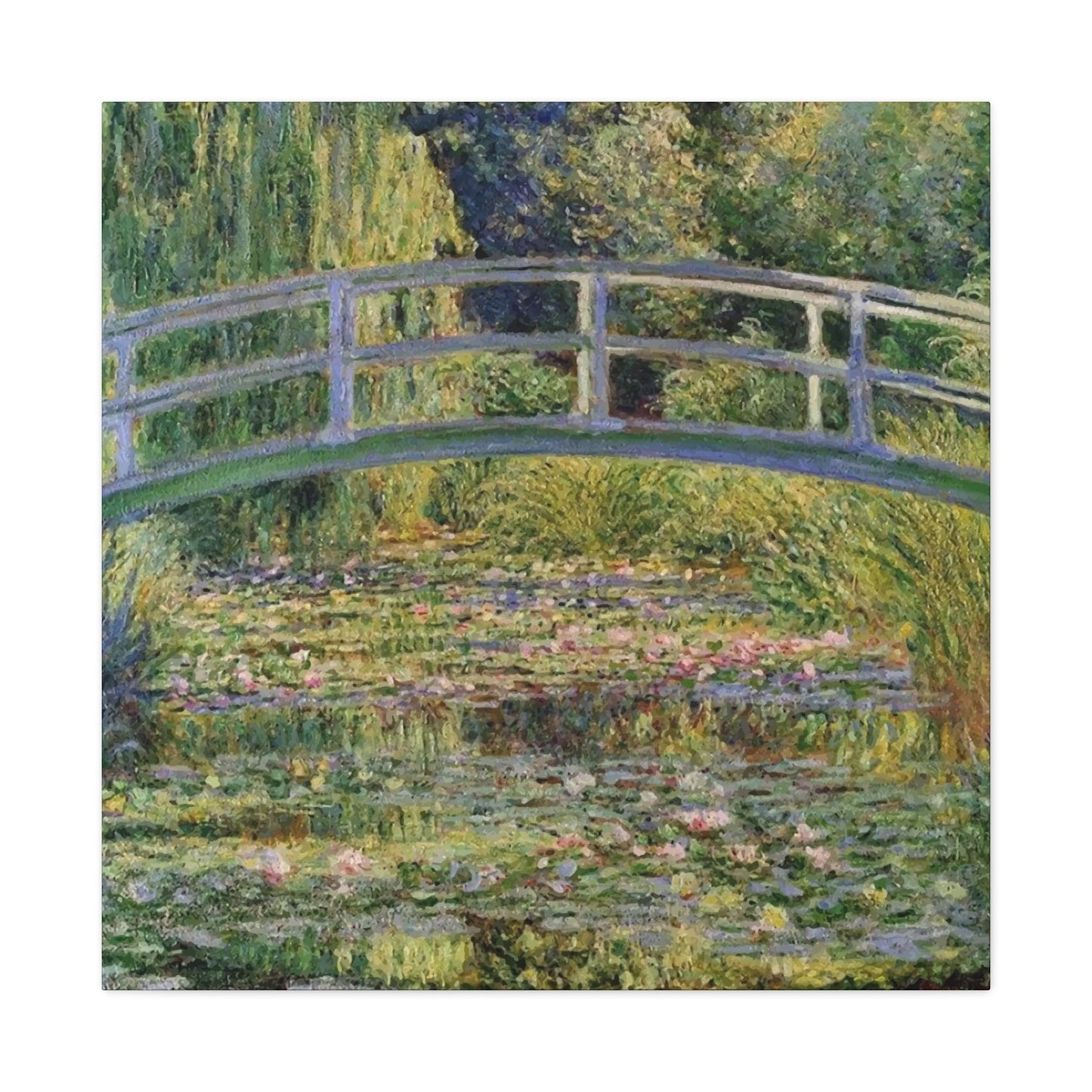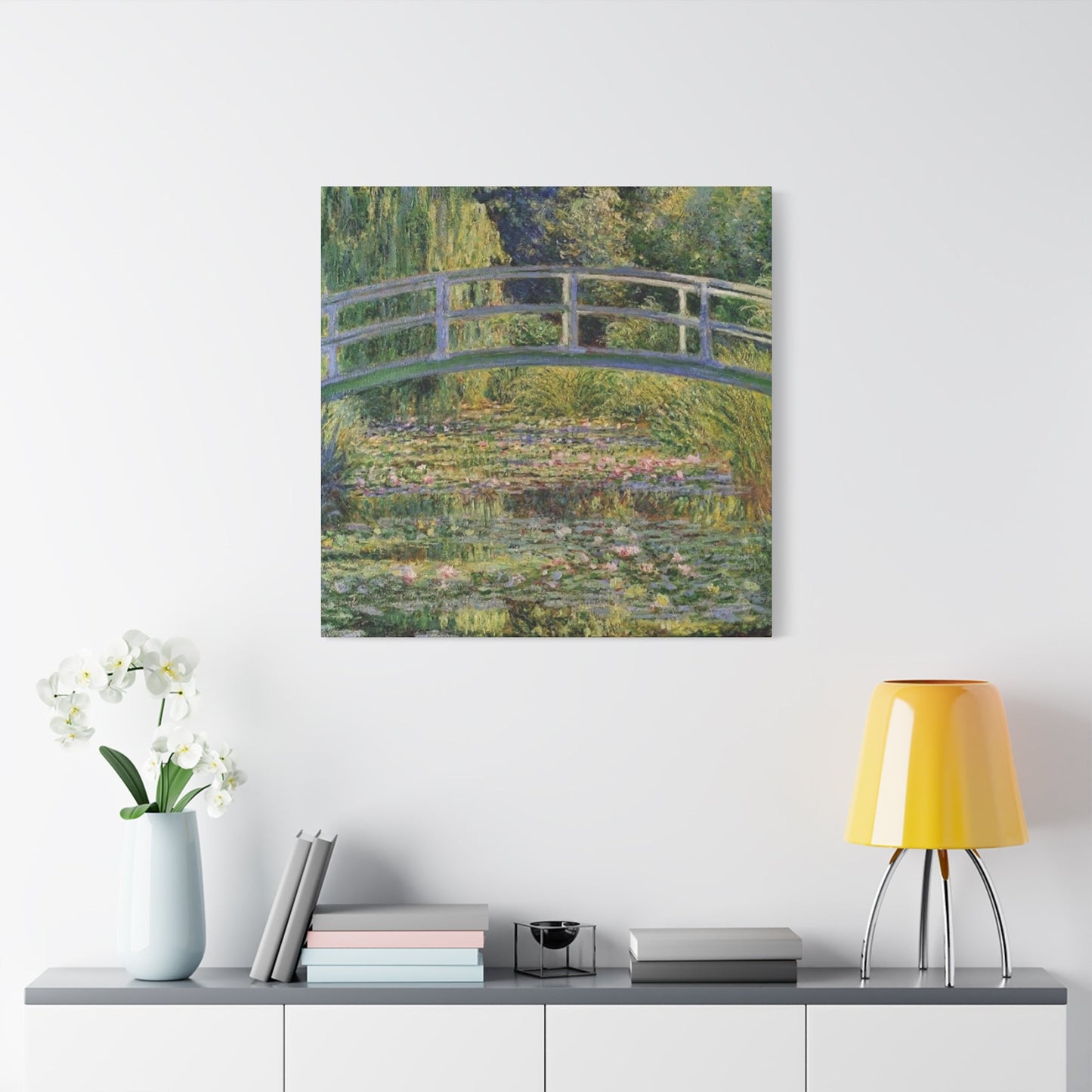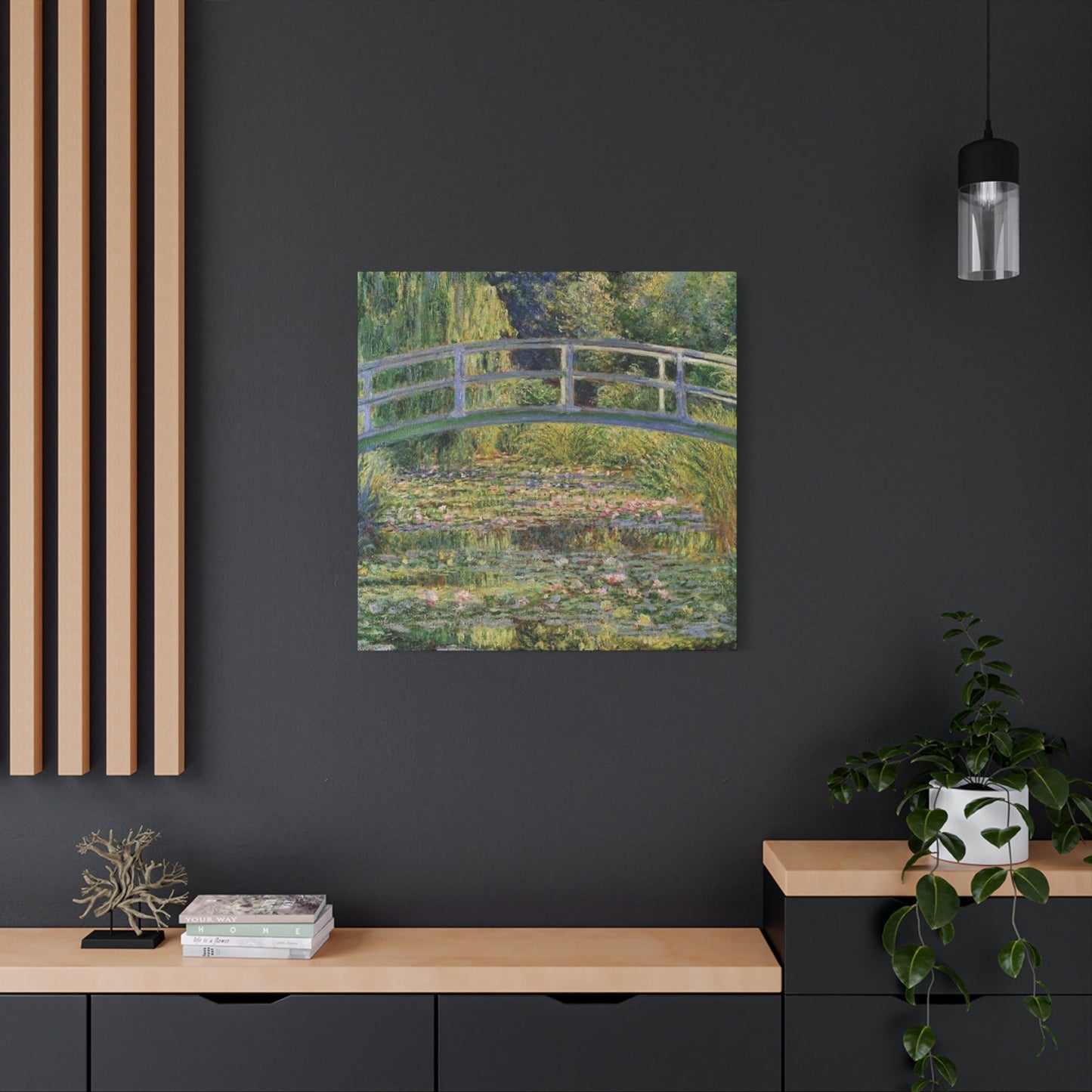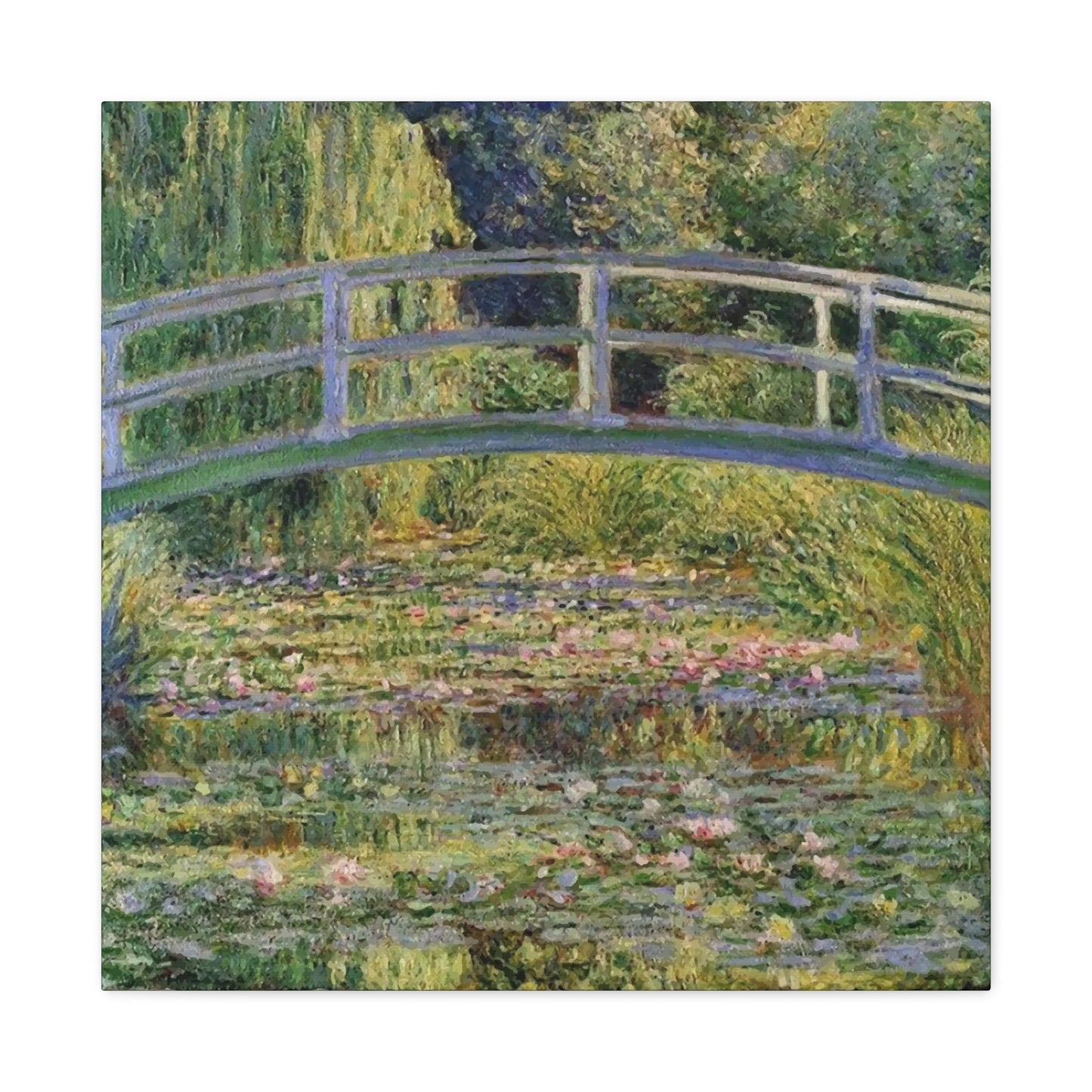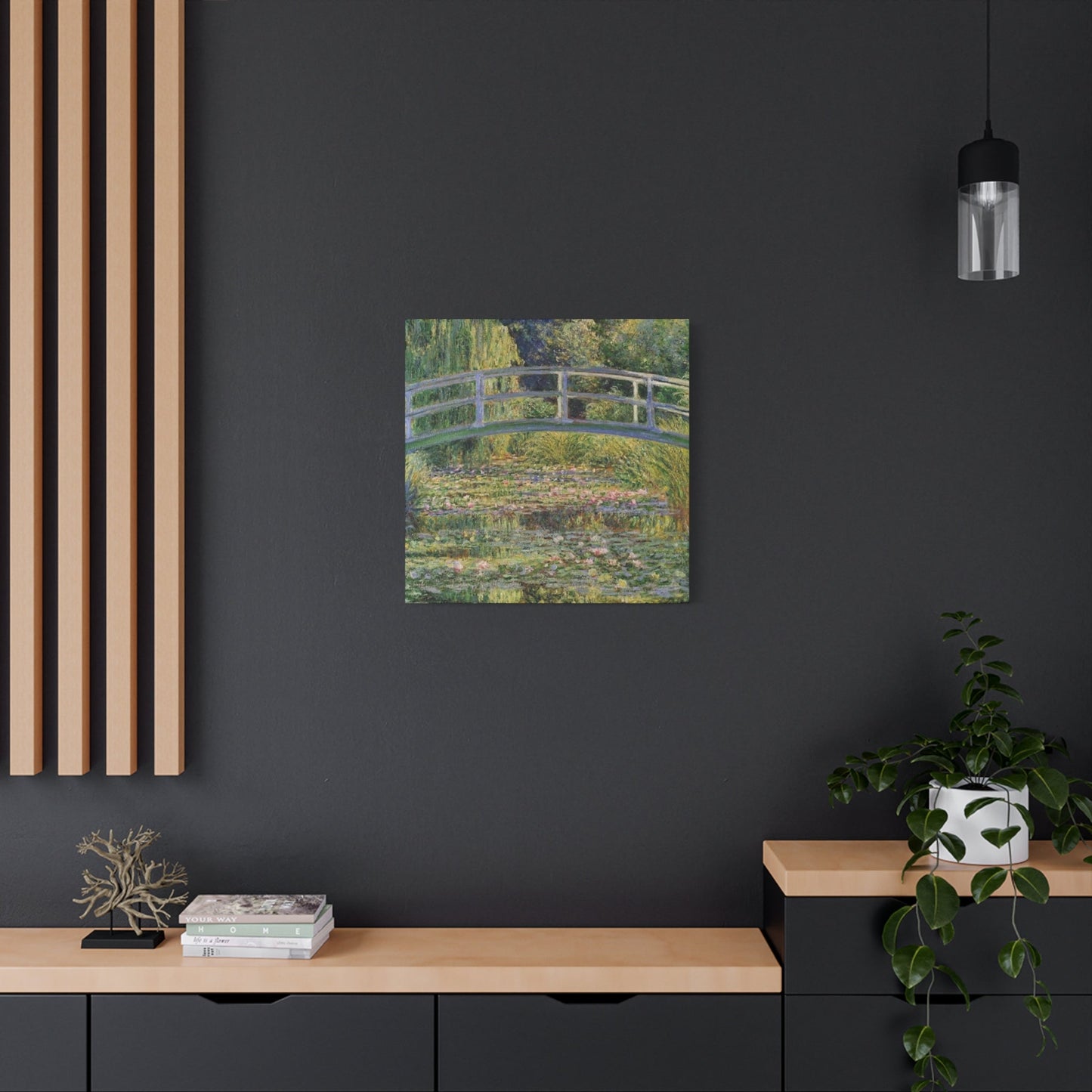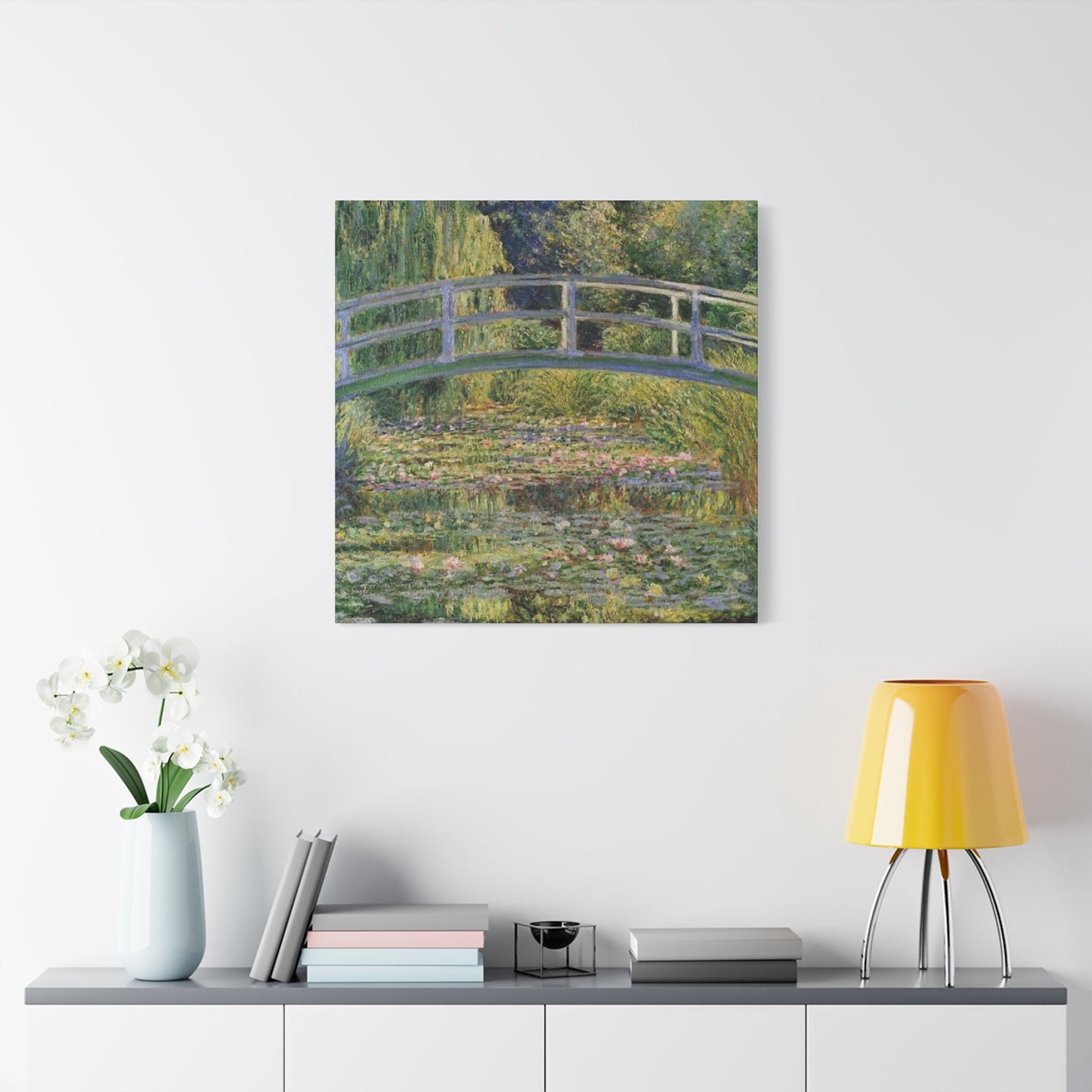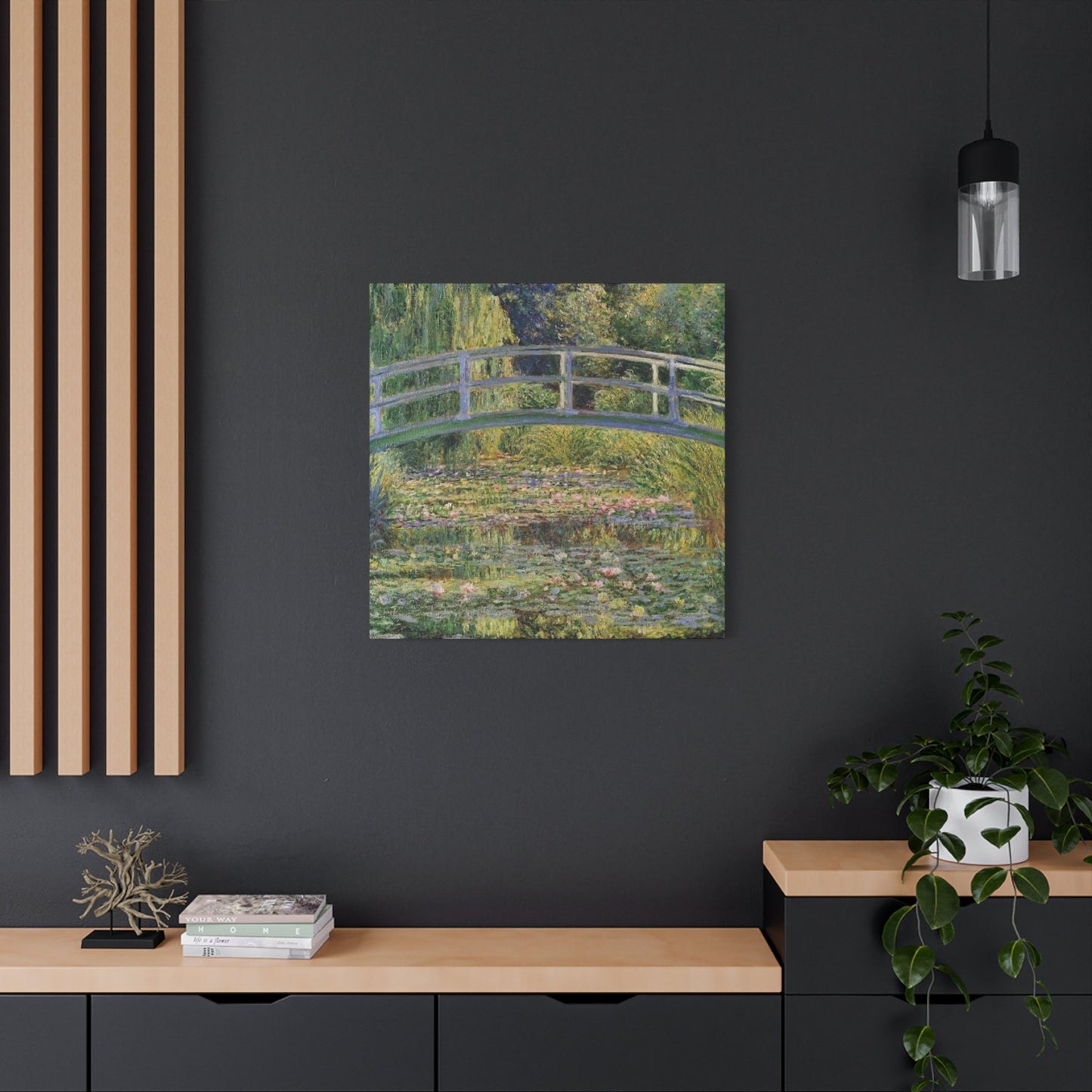Claude's Wall Art: Elevating Interior Design Through Timeless Artistic Expression
Interior design enthusiasts and art collectors worldwide continue to discover the profound impact that carefully selected artwork can have on living spaces. Among the most sought-after artistic styles for home decoration, Claude-inspired wall art stands out as a remarkable fusion of classical sophistication and contemporary appeal. These exceptional pieces bring the essence of masterful artistic vision into modern homes, creating environments that reflect both cultural appreciation and personal style.
The growing popularity of Claude canvas prints and wall art reflects a broader movement toward incorporating meaningful artistic elements into residential and commercial spaces. Whether you're designing a cozy living room, a professional office environment, or an intimate bedroom retreat, the right selection of Claude-inspired artwork can dramatically enhance the atmosphere and visual appeal of any space.
This comprehensive exploration delves into the various aspects of incorporating Claude wall art into your interior design projects, offering practical insights and creative strategies for maximizing the impact of these timeless artistic pieces. From understanding the nuances of different artistic styles to mastering the art of proper display techniques, we'll cover everything you need to know about transforming your spaces with these remarkable artistic creations.
Decorating with Claude's Artistic Vision
The distinctive artistic vision associated with Claude-inspired artwork represents a perfect marriage of classical technique and modern sensibility. When decorating with these pieces, it's essential to understand the underlying principles that make this artistic style so compelling and versatile for contemporary interior design applications.
Claude-inspired artwork typically features sophisticated color palettes that range from subtle earth tones to vibrant, eye-catching hues. These pieces often incorporate elements of light and shadow that create depth and dimension, making them ideal for spaces that need visual interest without overwhelming the existing decor. The artistic techniques employed in these works demonstrate a masterful understanding of composition, balance, and visual harmony that translates beautifully into modern home environments.
When selecting Claude-inspired pieces for your decorating projects, consider the emotional impact you want to create in each space. These artworks have the unique ability to evoke different moods depending on their subject matter and color composition. Landscape-inspired pieces can bring a sense of tranquility and natural beauty to any room, while more abstract interpretations can add energy and contemporary flair to modern living spaces.
The versatility of Claude wall art makes it suitable for virtually any decorating style, from traditional and classical to ultra-modern and minimalist. This adaptability stems from the timeless quality of the artistic elements and the sophisticated approach to color and composition that characterizes these works. By carefully selecting pieces that complement your existing decor while adding their own distinctive character, you can create spaces that feel both cohesive and visually engaging.
Consider the scale and proportion of your chosen pieces in relation to the spaces where they'll be displayed. Large-scale Claude canvas prints can serve as dramatic focal points in spacious rooms, while smaller pieces work beautifully in intimate settings or as part of gallery wall arrangements. The key is to maintain balance between the artwork and the surrounding elements, ensuring that each piece enhances rather than competes with your overall design scheme.
Lighting plays a crucial role in showcasing Claude-inspired artwork effectively. These pieces often feature subtle tonal variations and intricate details that benefit from proper illumination. Consider installing picture lights or adjusting your ambient lighting to highlight the unique characteristics of each piece, allowing viewers to fully appreciate the artistic craftsmanship and visual impact.
Statement Walls with Claude-Inspired Canvas Prints
Creating statement walls with Claude-inspired canvas prints offers an exceptional opportunity to establish dramatic focal points that anchor entire room designs. These carefully curated displays can transform ordinary walls into compelling visual narratives that reflect your artistic sensibilities while enhancing the overall aesthetic appeal of your living spaces.
The process of designing an effective statement wall begins with careful consideration of the wall's dimensions and the surrounding architectural elements. Large, uninterrupted wall surfaces provide ideal canvases for oversized Claude canvas prints that can command attention and set the tone for the entire room. These substantial pieces work particularly well in living rooms, dining areas, and master bedrooms where they can serve as conversation starters and sources of daily inspiration.
When planning your statement wall, think about the relationship between the chosen artwork and the room's function. In spaces designed for relaxation and contemplation, such as bedrooms or reading nooks, select Claude-inspired pieces with calming color palettes and serene subject matter. For more active social spaces like living rooms or entertainment areas, consider works with more vibrant colors and dynamic compositions that can energize the atmosphere and encourage interaction.
The arrangement of multiple pieces on a statement wall requires careful attention to spacing, proportion, and visual flow. Create templates using paper cutouts that match the dimensions of your chosen prints, allowing you to experiment with different configurations before committing to nail holes. This approach helps ensure optimal spacing and alignment while preventing costly mistakes that could damage your walls or compromise the overall effect.
Color coordination plays a vital role in the success of statement wall displays. While Claude-inspired artwork often features sophisticated color palettes, it's important to consider how these hues interact with your existing color scheme. Look for pieces that either complement your current palette or introduce accent colors that can be echoed in accessories, textiles, or other decorative elements throughout the space.
Texture and finish variations can add additional interest to statement wall displays. Mixing different canvas treatments, frame styles, or mounting techniques can create visual depth and prevent the arrangement from appearing flat or monotonous. Consider combining traditional framed pieces with modern floating mounts or incorporating three-dimensional elements that cast interesting shadows and create additional visual intrigue.
The impact of a well-designed statement wall extends far beyond its immediate visual appeal. These installations can influence the perceived size and proportions of a room, draw attention away from architectural flaws, and create gathering points that encourage social interaction and conversation.
Bringing Elegance Home with Claude Wall Art
Incorporating Claude wall art into residential spaces represents one of the most effective methods for introducing sophisticated elegance that transcends temporary design trends. These carefully crafted pieces possess an inherent refinement that can elevate the aesthetic quality of any home environment, regardless of its architectural style or existing decor themes.
The elegance associated with Claude-inspired artwork stems from several key characteristics that distinguish these pieces from more conventional decorative options. The sophisticated use of color creates visual harmony that feels both luxurious and approachable, while the masterful composition techniques employed in these works demonstrate an understanding of classical artistic principles that have remained relevant across centuries of changing styles and preferences.
Selecting the right Claude wall art pieces for your home requires careful consideration of both aesthetic and practical factors. Begin by evaluating the existing character of your spaces, identifying areas where the addition of elegant artwork could enhance the overall atmosphere. Formal dining rooms, master bedrooms, and main living areas often benefit most dramatically from the inclusion of high-quality artistic pieces that reflect the homeowners' appreciation for cultural refinement.
The placement of Claude wall art within your home should follow established principles of interior design while allowing for personal expression and creativity. Consider the viewing angles from which each piece will be seen most frequently, ensuring that important works are positioned at appropriate eye levels and in locations with adequate lighting. The relationship between artwork and furniture arrangements should feel natural and intentional, with pieces serving to anchor seating areas or highlight architectural features.
Quality considerations play a crucial role in achieving the desired elegant effect. Investment in well-produced Claude canvas prints or professionally framed pieces ensures longevity and maintains the sophisticated appearance that makes these works so appealing. Poor-quality reproductions or inadequate framing can undermine the elegant atmosphere you're working to create, making it worthwhile to prioritize quality over quantity in your selections.
The integration of Claude wall art with existing decorative elements requires a thoughtful approach that balances artistic impact with overall design coherence. Consider how the colors, textures, and themes in your chosen artwork relate to other elements in the room, including furniture finishes, textile patterns, and architectural details. The goal is to create a harmonious environment where the artwork enhances rather than conflicts with the surrounding design elements.
Maintenance and care of your Claude wall art collection ensures that these elegant pieces continue to contribute positively to your home's atmosphere over time. Proper hanging techniques, appropriate environmental conditions, and regular cleaning help preserve both the physical condition and aesthetic impact of your investment in artistic elegance.
Curating a Home Gallery with Claude Canvas Pieces
The process of curating a home gallery using Claude canvas pieces offers art enthusiasts an opportunity to create personalized museum-quality displays within their residential environments. This approach to collecting and displaying artwork requires both artistic vision and practical planning skills, resulting in cohesive presentations that reflect individual taste while maintaining professional exhibition standards.
Successful home gallery curation begins with the development of a clear vision for your collection's direction and scope. Consider whether you want to focus on specific themes, time periods, or artistic techniques within the broader category of Claude-inspired artwork. This focused approach helps ensure consistency throughout your collection while allowing for growth and refinement over time.
The selection of individual pieces for your home gallery should balance personal preference with objective artistic quality. Evaluate potential additions based on their technical execution, visual impact, and relationship to existing works in your collection. Each new acquisition should contribute something unique while maintaining harmony with the overall aesthetic direction you've established for your gallery.
Space planning considerations become particularly important when creating home gallery displays. Unlike commercial galleries with abundant wall space and flexible lighting systems, residential environments require creative solutions for maximizing display opportunities while maintaining livability. Consider how gallery areas will function within the broader context of daily life, ensuring that artwork displays don't interfere with traffic patterns or practical room functions.
Rotation strategies can help maintain interest and freshness in your home gallery while accommodating collections that exceed available display space. Develop systems for safely storing pieces that aren't currently on display, and consider seasonal or thematic rotation schedules that allow different aspects of your collection to be featured throughout the year.
Documentation and inventory management become increasingly important as your collection grows. Maintain detailed records of each piece, including acquisition information, condition notes, and display history. This systematic approach not only helps with insurance and security concerns but also aids in making informed decisions about future acquisitions and display arrangements.
The educational aspect of home gallery curation adds another dimension to the collecting experience. Research the historical context and artistic significance of your Claude canvas pieces, sharing this knowledge with family members and guests who visit your gallery. This educational component can enhance appreciation for the works while contributing to broader cultural understanding and preservation efforts.
Lighting design plays a crucial role in the success of home gallery presentations. Claude canvas pieces often feature subtle tonal variations and intricate details that require proper illumination to be fully appreciated. Invest in adjustable gallery lighting systems that can be customized for different pieces and modified as your collection evolves.
Claude's Wall Art: Classic Meets Contemporary
The intersection of classical artistic traditions with contemporary design sensibilities creates a unique aesthetic category that appeals to diverse decorating preferences and lifestyle approaches. Claude-inspired wall art exemplifies this successful fusion, offering pieces that honor traditional artistic techniques while remaining relevant and appealing in modern interior design contexts.
Classical elements in Claude wall art typically include sophisticated compositional structures, refined color relationships, and technically accomplished execution methods that reflect centuries of artistic development and refinement. These traditional aspects provide a sense of permanence and cultural continuity that many homeowners find appealing in an era of rapid change and disposable consumer culture.
Contemporary influences manifest in the selection of subject matter, color palettes that complement modern decorating schemes, and presentation formats that work well in today's residential environments. This modern adaptation ensures that classical artistic principles remain accessible and relevant to current lifestyle preferences and design trends.
The balance between classic and contemporary elements requires careful consideration during the selection process. Pieces that lean too heavily toward traditional approaches may feel outdated or formal in casual modern settings, while overly contemporary interpretations might lack the timeless appeal that makes classical art so enduring. The most successful pieces achieve a harmonious blend that feels both rooted in artistic tradition and perfectly suited to contemporary living.
Integration strategies for classic-meets-contemporary artwork depend largely on the existing character of your interior spaces. In homes with traditional architectural details, Claude wall art can serve as a bridge between historical elements and modern furnishings. In contemporary settings, these pieces can add depth and sophistication that prevents spaces from feeling sterile or lacking in personality.
The versatility of this artistic approach makes it suitable for virtually any room in the home, from formal entertaining spaces to casual family areas. The key is selecting pieces that match the intended mood and function of each space while maintaining consistency with your overall design vision and personal aesthetic preferences.
Accessorizing around classic-meets-contemporary artwork requires sensitivity to the dual nature of these pieces. Traditional framing options can emphasize classical elements, while sleek modern frames highlight contemporary aspects. Similarly, surrounding decor can be adjusted to emphasize different characteristics of the artwork depending on the desired overall effect.
Investment considerations for classic-meets-contemporary pieces often favor long-term value retention due to their timeless appeal and broad market acceptance. These works typically age well aesthetically and maintain relevance across changing decorating trends, making them sound choices for collectors interested in both aesthetic pleasure and financial prudence.
Styling Your Living Room with Claude Canvas Prints
Living rooms serve as the primary social spaces in most homes, making them ideal locations for showcasing carefully selected Claude canvas prints that can enhance both the aesthetic appeal and functional comfort of these important areas. The process of styling a living room with artistic elements requires consideration of multiple factors including traffic patterns, seating arrangements, lighting conditions, and the overall mood you want to create.
The selection of appropriate Claude canvas prints for living room display should begin with an analysis of the room's existing design elements and functional requirements. Consider the scale of your furniture, the height of your ceilings, and the amount of natural light available when choosing pieces. Large-scale prints work well as focal points above mantels or sofas, while smaller pieces can be grouped to create gallery wall arrangements that add visual interest without overwhelming the space.
Placement strategies for living room artwork should take into account the primary viewing positions and traffic flow patterns. Pieces positioned at appropriate eye levels for seated viewers will be appreciated more frequently than those hung too high or in locations that are difficult to see from main seating areas. Consider how artwork will be viewed from different angles and adjust positioning accordingly.
Color coordination between your Claude canvas prints and existing living room elements creates visual harmony that makes spaces feel cohesive and professionally designed. Extract accent colors from your chosen artwork and repeat them in throw pillows, area rugs, or other accessories to create visual connections that tie the room together. This approach helps artwork feel integrated rather than simply added as an afterthought.
Lighting considerations become particularly important in living rooms where artwork competes with windows, table lamps, and overhead fixtures for visual attention. Consider installing picture lights or adjusting existing lighting to properly illuminate your Claude canvas prints, ensuring that they remain visible and impactful throughout different times of day and various lighting conditions.
Furniture arrangements can be modified to enhance the impact of your chosen artwork while maintaining the room's functionality. Position seating to take advantage of artwork sightlines, and consider how side tables, consoles, or other furniture pieces can be used to create visual balance and provide display surfaces for complementary decorative objects.
The seasonal adaptability of your living room styling allows for periodic refreshment without major renovation expenses. Consider how different Claude canvas prints might work better during various seasons, and develop rotation strategies that keep your living room feeling fresh and current throughout the year.
Maintenance considerations for living room artwork include protection from direct sunlight, regular dusting, and occasional professional cleaning to ensure long-term preservation. Living rooms typically experience more traffic and environmental exposure than other rooms, making proper care essential for maintaining the appearance and value of your investment.
Adding Personality with Claude Wall Art
Personal expression through interior design choices allows homeowners to create spaces that reflect individual taste, experiences, and values while maintaining aesthetic appeal and functional practicality. Claude wall art offers exceptional opportunities for personality expression due to the diversity of styles, subjects, and interpretations available within this artistic category.
The process of selecting Claude wall art that reflects your personality begins with honest self-assessment of your aesthetic preferences, lifestyle patterns, and emotional responses to different artistic elements. Consider which colors energize or calm you, what subjects capture your interest, and how you want visitors to feel when they enter your spaces. This introspective approach helps guide selection decisions that result in truly personal and meaningful artistic displays.
Mixing different styles and periods within the Claude-inspired category can create eclectic displays that reflect complex personalities and diverse interests. Combine landscape pieces with abstract interpretations, or pair traditional compositions with more contemporary color palettes to create visual narratives that tell your unique story through artistic choices.
Scale and proportion decisions offer additional opportunities for personality expression. Bold individuals might gravitate toward oversized pieces that make dramatic statements, while those who prefer subtlety might choose smaller works that reward close observation and contemplation. The key is selecting pieces that feel authentic to your personal style rather than following generic decorating advice that might not reflect your individual preferences.
Unconventional placement strategies can further personalize your use of Claude wall art. Consider displaying pieces in unexpected locations such as bathrooms, closets, or stairway landings where they can provide pleasant surprises and demonstrate your commitment to surrounding yourself with beautiful objects regardless of traditional decorating conventions.
Grouping strategies for multiple pieces allow for complex personality expression through curatorial decisions. Create thematic groupings that reflect specific interests or experiences, or develop more abstract arrangements that demonstrate your understanding of visual composition and artistic relationships. The stories these groupings tell become part of your home's personality and provide conversation starters for guests.
The evolution of personal taste over time can be accommodated through flexible display systems that allow for easy reconfiguration and addition of new pieces. Develop hanging systems and storage solutions that support collection growth and changing preferences without requiring major renovations or permanent commitments to specific arrangements.
Documentation of your personality expression through Claude wall art creates lasting records of your aesthetic journey and decision-making process. Photograph your displays over time, noting what attracted you to specific pieces and how your preferences have evolved. This documentation becomes part of your personal design history and can inform future collecting and displaying decisions.
Changing Bedrooms with Claude Canvas Pieces
Bedroom environments require careful consideration of psychological comfort, aesthetic harmony, and personal retreat qualities when selecting and displaying artwork. Claude canvas pieces offer exceptional potential for creating bedroom atmospheres that support rest, relaxation, and personal restoration while reflecting individual taste and style preferences.
The selection of appropriate Claude canvas pieces for bedroom display should prioritize calming compositions and soothing color palettes that promote relaxation rather than stimulation. Landscape scenes, gentle abstracts, and pieces with soft tonal variations typically work better in bedroom environments than bold, high-contrast works that might interfere with sleep and rest patterns.
Positioning strategies for bedroom artwork must account for viewing angles from both standing and reclining positions. Pieces hung at standard gallery height may be difficult to appreciate from bed, making lower placement or angled hanging systems more appropriate for bedroom applications. Consider sight lines from different positions within the room to ensure optimal viewing opportunities.
Master bedroom installations often benefit from larger-scale pieces that can serve as focal points and anchor points for furniture arrangements. Over-bed placement remains popular for good reasons, as it creates visual balance and provides a natural focal point that can be appreciated from various positions within the room.
Guest bedroom considerations might favor more universally appealing Claude canvas pieces that create welcoming atmospheres without reflecting overly personal taste preferences. Neutral color palettes and accessible subject matter help ensure that guests feel comfortable while still providing visual interest and aesthetic appeal.
Children's bedroom applications for Claude-inspired artwork require special consideration of age-appropriate content and durability concerns. Pieces with educational value or inspirational themes can contribute to positive developmental environments while introducing children to artistic appreciation and cultural literacy.
Privacy and intimacy concerns in bedroom spaces affect both artwork selection and display strategies. Consider how pieces will be viewed by visitors versus family members, and choose works that feel appropriate for these intimate spaces where personal expression takes precedence over public presentation concerns.
Lighting design for bedroom artwork must balance visibility requirements with the need for adjustable illumination levels that support various activities and time-of-day preferences. Dimmer switches, bedside reading lights, and natural light control through window treatments all affect how artwork appears and functions within bedroom environments.
Seasonal considerations for bedroom artwork might involve rotation strategies that align with changing light conditions, color preferences, and mood requirements throughout the year. Warmer tones might feel more appropriate during winter months, while cooler palettes could provide psychological comfort during summer periods.
Claude Wall Art for Offices and Creative Spaces
Professional work environments and creative studios present unique opportunities for displaying Claude wall art that can enhance productivity, inspire creativity, and create atmospheres conducive to focused thinking and innovative problem-solving. The selection and arrangement of artwork in these functional spaces requires careful balance between aesthetic appeal and practical considerations.
Office artwork selection should consider the psychological impact of different visual elements on work performance and professional image. Claude-inspired pieces with organized compositions and harmonious color relationships can promote mental clarity and reduce visual stress, while still providing the aesthetic sophistication that reflects well on professional competence and cultural awareness.
Creative workspace applications for Claude wall art might favor pieces with more dynamic compositions or unusual color combinations that can stimulate innovative thinking and provide visual inspiration during creative blocks. Artists, designers, and other creative professionals often benefit from exposure to high-quality artistic work that can inform and influence their own creative output.
Client-facing office spaces require artwork selections that project appropriate professional image while remaining broadly appealing to diverse visitor preferences. Claude wall art's sophisticated character makes it suitable for most professional contexts, from legal offices to creative agencies, providing cultural credibility without controversial content or divisive stylistic choices.
Home office integration presents opportunities for more personal expression while maintaining professional appearance during video conferences and client meetings. Consider camera angles and background visibility when positioning artwork in home office spaces, ensuring that pieces enhance rather than distract from professional video communications.
Collaborative workspace considerations might include artwork that serves as conversation starters or reference points for team discussions. Pieces with historical significance or technical excellence can provide common ground for diverse team members while contributing to the overall intellectual atmosphere of collaborative environments.
Productivity research suggests that exposure to high-quality visual art can enhance creative thinking and problem-solving abilities. Strategic placement of Claude canvas pieces within sight lines from work positions can provide periodic visual relief from screen-based tasks while stimulating different areas of brain function associated with aesthetic appreciation and spatial reasoning.
Maintenance considerations for office artwork include protection from sunlight exposure, climate control concerns, and security issues that might not apply in residential settings. Professional-grade hanging systems and conservation-quality materials become more important in office environments where artwork investments need to maintain their appearance and value over extended periods.
Budget considerations for office artwork might favor high-quality reproductions over original pieces, particularly in spaces with multiple locations or security concerns. Claude canvas prints can provide the desired aesthetic impact while minimizing financial risk and allowing for easier replacement or rotation as needed.
How to Pair Claude's Prints with Modern Interiors
Contemporary interior design movements emphasize clean lines, functional aesthetics, and carefully curated decorative elements that contribute to overall design cohesion without adding unnecessary complexity. Claude prints can enhance modern interiors when selected and displayed with attention to these design principles and aesthetic preferences.
Color palette coordination becomes particularly important when integrating traditional artistic elements into modern interior schemes. Modern interiors often feature neutral base colors with carefully selected accent hues, making it essential to choose Claude prints that either complement existing color schemes or introduce new accent colors that can be repeated in accessories and textiles throughout the space.
Scale and proportion considerations in modern interiors typically favor larger pieces that can hold their own against expansive wall surfaces and bold furniture forms. Oversized Claude canvas prints work well as statement pieces in minimalist settings where they can provide visual weight without competing with excessive decorative elements.
Framing and presentation options should align with modern aesthetic preferences for clean, simple lines and high-quality materials. Sleek metal frames, floating mount systems, or frameless presentation methods often work better than ornate traditional framing that might conflict with contemporary design sensibilities.
Furniture relationships in modern interiors require careful consideration of how artwork interacts with contemporary seating, tables, and storage solutions. Claude prints should complement rather than compete with modern furniture forms, creating visual harmony that supports the overall design aesthetic.
Lighting integration in modern spaces often features sophisticated systems that can be customized to highlight artwork while supporting various functional lighting needs. Consider how your chosen Claude prints will appear under different lighting conditions and adjust illumination accordingly to maximize their visual impact.
Architectural feature coordination helps ensure that artwork enhances rather than conflicts with contemporary design elements such as exposed beams, large windows, or open floor plans. Claude prints can serve as visual bridges between different areas in open-concept spaces while maintaining design continuity.
Textile and accessory coordination allows modern interiors to incorporate colors and textures from Claude prints throughout the space, creating visual connections that make artwork feel integrated rather than simply added as decoration. This holistic approach supports the contemporary preference for cohesive, well-planned design schemes.
Technology integration considerations in modern homes might affect artwork placement decisions, particularly in spaces with wall-mounted televisions, sound systems, or smart home control panels. Plan artwork arrangements that accommodate technology requirements while maintaining aesthetic balance and visual appeal.
Statement Pieces: Large Claude Canvas Prints
Large-scale artwork installations require specific planning and installation considerations that differ significantly from standard-sized pieces, but they offer exceptional potential for creating dramatic focal points that can define entire room designs and establish strong aesthetic foundations for interior decorating projects.
Selection criteria for large Claude canvas prints should prioritize compositions that maintain visual interest and technical quality when viewed at close range. Fine details that might be lost in smaller reproductions become more apparent in large-scale presentations, making it important to choose pieces with sufficient resolution and artistic complexity to reward close examination.
Architectural compatibility considerations become crucial when planning large artwork installations. Evaluate ceiling heights, wall dimensions, and structural support capabilities before committing to oversized pieces. Standard residential walls may require additional hanging hardware or professional installation to safely support large canvas prints.
Viewing distance calculations help determine appropriate sizes for specific room applications. Large pieces require adequate viewing distances to be appreciated properly, making them most suitable for spacious rooms where viewers can step back far enough to see the complete composition. Cramped viewing conditions can make large artwork feel overwhelming rather than impressive.
Visual weight and balance considerations affect how large Claude canvas prints interact with existing furniture and architectural elements. These substantial pieces can anchor entire room designs, but they must be balanced with appropriately scaled furniture and complementary decorative elements to prevent visual imbalance or spatial awkwardness.
Installation planning for large canvas prints requires professional expertise in most cases. Weight distribution, wall attachment methods, and safety considerations all become more complex with larger pieces. Budget for professional installation services when planning large-scale artwork projects to ensure proper mounting and long-term safety.
Room proportion relationships determine whether large artwork will enhance or overwhelm specific spaces. High ceilings and expansive wall surfaces naturally accommodate large pieces, while more intimate spaces might benefit from medium-sized works that provide visual interest without dominating the environment.
Maintenance and cleaning procedures for large canvas prints require special equipment and techniques that differ from standard artwork care. Consider ongoing maintenance requirements and costs when budgeting for large-scale artwork investments, including periodic professional cleaning and potential restoration needs.
Investment considerations for large Claude canvas prints often favor pieces with strong artistic merit and broad appeal, as these substantial works represent significant financial commitments that should provide lasting satisfaction and potential value retention over time.
Affordable Ways to Collect Claude Wall Art
Building a meaningful collection of Claude wall art doesn't require unlimited financial resources, but it does demand strategic planning, patient accumulation, and creative approaches to acquisition and display that maximize aesthetic impact while respecting budget constraints and practical limitations.
Print quality evaluation helps ensure that budget-conscious purchases still deliver satisfactory visual results. High-quality digital reproductions can provide excellent aesthetic value when produced with appropriate materials and printing techniques, making original works unnecessary for many collecting goals and interior design applications.
Size strategy considerations might favor collecting smaller pieces that offer better value per square inch while still providing significant visual impact when grouped appropriately. Multiple smaller Claude prints can create impressive gallery wall displays that cost less than single large pieces while offering more flexibility for future rearrangement.
Seasonal sales and promotional opportunities from reputable art retailers can provide access to higher-quality pieces at reduced prices. Monitor preferred suppliers for clearance events, end-of-season sales, and bulk purchase discounts that can stretch collecting budgets while maintaining quality standards.
DIY framing solutions can significantly reduce the total cost of artwork acquisition while allowing for customized presentation that matches specific decor requirements. Learning basic framing techniques or working with local frame shops during slow periods can provide professional results at reduced costs.
Rotation strategies allow smaller collections to provide variety and freshness over time. Store additional pieces safely and rotate displays seasonally or when you want to refresh room appearances without purchasing new artwork. This approach maximizes the impact of limited collections while maintaining visual interest.
Group purchasing opportunities through art clubs, community organizations, or informal collecting groups can provide access to bulk pricing and shared shipping costs that reduce individual expenses while building connections with other art enthusiasts who share similar interests and budget considerations.
Online marketplace exploration can reveal affordable options from various sellers, but requires careful evaluation of seller reputation, return policies, and quality guarantees. Digital marketplaces offer unprecedented access to diverse selections, but buyer education and caution are essential for successful budget collecting.
Quality assessment skills become particularly important when working with limited budgets. Learn to evaluate printing quality, material durability, and overall craftsmanship to ensure that affordable purchases still provide good value and satisfactory long-term performance.
Alternative presentation methods such as clip frames, magnetic mounting systems, or temporary display solutions can reduce initial costs while allowing for future upgrades as budgets permit. Focus collecting resources on artwork quality rather than expensive framing that can be improved over time.
Claude Canvas Prints: Perfect Gifts for Art Lovers
Selecting Claude canvas prints as gifts for art enthusiasts requires understanding recipient preferences, lifestyle considerations, and practical factors that affect gift satisfaction and long-term appreciation. Thoughtful gift selection in the art category can provide lasting pleasure and demonstrate genuine consideration for recipient interests and values.
Recipient assessment should consider known preferences for artistic styles, color palettes, and subject matter that align with their existing collections or expressed interests. Observing their current artwork displays, listening to comments about museum exhibitions, or noting reactions to different artistic styles provides valuable guidance for gift selection decisions.
Size and scale considerations for gift artwork must account for unknown display space limitations and existing decor schemes. Medium-sized pieces typically offer the most versatility for gift recipients who may need to integrate new artwork into established decorating schemes without major modifications or furniture rearrangements.
Subject matter selection might favor broadly appealing themes and compositions that can work in various room settings and decorating styles. Landscape scenes, abstract compositions, and historically significant artistic interpretations often provide safe choices that can appeal to diverse tastes while avoiding potentially controversial or overly personal subject matter.
Presentation quality for gift artwork should reflect the special occasion and demonstrate appropriate investment in the recipient's pleasure and satisfaction. Professional framing, quality matting, and attractive packaging enhance the gift-giving experience while ensuring that the artwork is ready for immediate display and enjoyment.
Occasion-specific considerations might influence the selection of particular Claude prints that relate to celebrations, milestones, or meaningful events in the recipient's life. Artwork with personal significance or symbolic meaning can provide deeper satisfaction than purely decorative pieces, creating lasting connections between the gift and important memories.
Budget planning for art gifts should prioritize quality over size or quantity, as recipients typically prefer single high-quality pieces over multiple lesser works. Focus resources on the best possible reproduction quality and presentation rather than attempting to provide extensive collections that might compromise individual piece quality.
Packaging and presentation details contribute significantly to the gift-giving experience and initial recipient reaction. Consider custom matting with gift messages, attractive wrapping that protects the artwork during transport, and accompanying documentation that explains the artistic significance or selection rationale.
Return and exchange policies become particularly important for art gifts, as personal taste variations make it impossible to guarantee recipient satisfaction with specific pieces. Work with retailers who offer flexible return options while protecting the condition and value of artwork during the evaluation period.
Follow-up opportunities allow gift-givers to enhance the recipient experience through additional information, complementary pieces, or assistance with display and integration into existing decor schemes. Maintaining interest in how the artwork is being enjoyed demonstrates ongoing care and can strengthen personal relationships.
From Impressionism to Modern: Claude-Inspired Art
The evolution of artistic movements from classical Impressionism through contemporary interpretations provides a rich foundation for understanding the diversity and appeal of Claude-inspired artwork available to today's collectors and decorating enthusiasts. This historical progression demonstrates how timeless artistic principles adapt to changing aesthetic preferences and cultural contexts.
Impressionist foundations in Claude-inspired artwork reflect the revolutionary approaches to light, color, and atmospheric effects that characterized this groundbreaking artistic movement. Understanding these historical origins helps collectors appreciate the technical innovations and cultural significance that continue to influence contemporary artistic interpretations and reproduction techniques.
Post-Impressionist developments built upon earlier innovations while introducing new approaches to composition, color relationships, and emotional expression that expanded the possibilities for artistic interpretation. These evolutionary steps demonstrate how artistic traditions grow and adapt while maintaining connections to foundational principles and techniques.
Modern interpretations of Claude-inspired themes incorporate contemporary color palettes, updated compositional approaches, and production techniques that make historical artistic principles accessible to current decorating preferences and lifestyle requirements. This adaptation process ensures continued relevance while honoring artistic heritage and cultural continuity.
Technical evolution in reproduction methods allows contemporary collectors to access high-quality representations of classical artistic achievements while benefiting from modern materials science and printing technology advances. Digital reproduction techniques can capture subtle color variations and textural details that previous generation reproductions couldn't achieve.
Stylistic range within Claude-inspired artwork encompasses everything from faithful historical reproductions to loose contemporary interpretations that extract essential elements while adapting them for modern aesthetic preferences. This diversity ensures that collectors can find pieces that match their specific decorating requirements and personal taste preferences.
Cultural significance considerations help collectors understand how different periods and interpretations reflect changing social values, aesthetic preferences, and technological capabilities. This historical awareness can enhance appreciation for specific pieces while informing collection development strategies and display decisions.
Educational opportunities associated with collecting across different periods and styles provide ongoing learning experiences that can deepen appreciation for artistic achievement and cultural development. Building knowledge about artistic movements and their historical contexts adds intellectual satisfaction to the aesthetic pleasure of artwork ownership.
Investment implications vary across different periods and interpretation styles within the Claude-inspired category. Understanding market preferences, historical significance, and quality factors helps collectors make informed decisions that balance aesthetic satisfaction with practical considerations about long-term value and marketability.
Contemporary relevance ensures that classical artistic principles continue to provide inspiration and satisfaction for modern collectors who seek meaningful connections to cultural heritage while accommodating current lifestyle preferences and decorating requirements.
Conclusion
Claude’s wall art offers a sophisticated and timeless approach to enhancing interior design, blending artistic mastery with visual elegance. By incorporating his works into living rooms, bedrooms, offices, or galleries, homeowners can transform ordinary walls into spaces of inspiration, creativity, and cultural refinement. Each piece reflects Claude’s unique artistic vision, balancing composition, color, and emotion to create artworks that resonate deeply with viewers while harmonizing seamlessly with diverse interior styles.
The appeal of Claude’s wall art lies in its ability to merge timeless artistic expression with modern interior sensibilities. His pieces often feature rich textures, nuanced color palettes, and thoughtful compositions that draw the eye and spark conversation. Whether rendered as paintings, prints, or canvas displays, Claude’s works capture movement, light, and emotion in ways that elevate the atmosphere of any room. The artistry communicates not only aesthetic beauty but also the subtle narrative and emotional depth embedded in each piece, allowing observers to form personal connections and experience art in a meaningful way.
Beyond visual elegance, Claude’s wall art embodies emotional and symbolic significance. Each creation conveys a sense of harmony, inspiration, and sophistication, encouraging reflection and enhancing the psychological ambiance of interiors. The themes, motifs, and stylistic choices invite viewers to engage with the art, fostering an environment where creativity, mindfulness, and appreciation for craftsmanship thrive. By integrating Claude’s works into home or office décor, individuals cultivate spaces that are both visually captivating and emotionally enriching.
From a design perspective, Claude’s wall art is remarkably versatile. Large-scale canvases can anchor living rooms or dining areas as statement pieces, while smaller works provide accent points for hallways, studies, or bedrooms. The colors, textures, and compositions are adaptable to a variety of décor styles, from modern and minimalist to classic and eclectic, ensuring that each piece enhances both style and cohesion within the space.
Ultimately, Claude’s wall art transcends simple decoration—it is a celebration of artistic expression, interior sophistication, and timeless beauty. By incorporating these works into interiors, individuals can elevate their spaces into environments that inspire, captivate, and reflect personal taste and cultural appreciation. Each piece transforms walls into statements of creativity, emotion, and refinement, offering a lasting impact that combines elegance, inspiration, and the enduring power of art.













